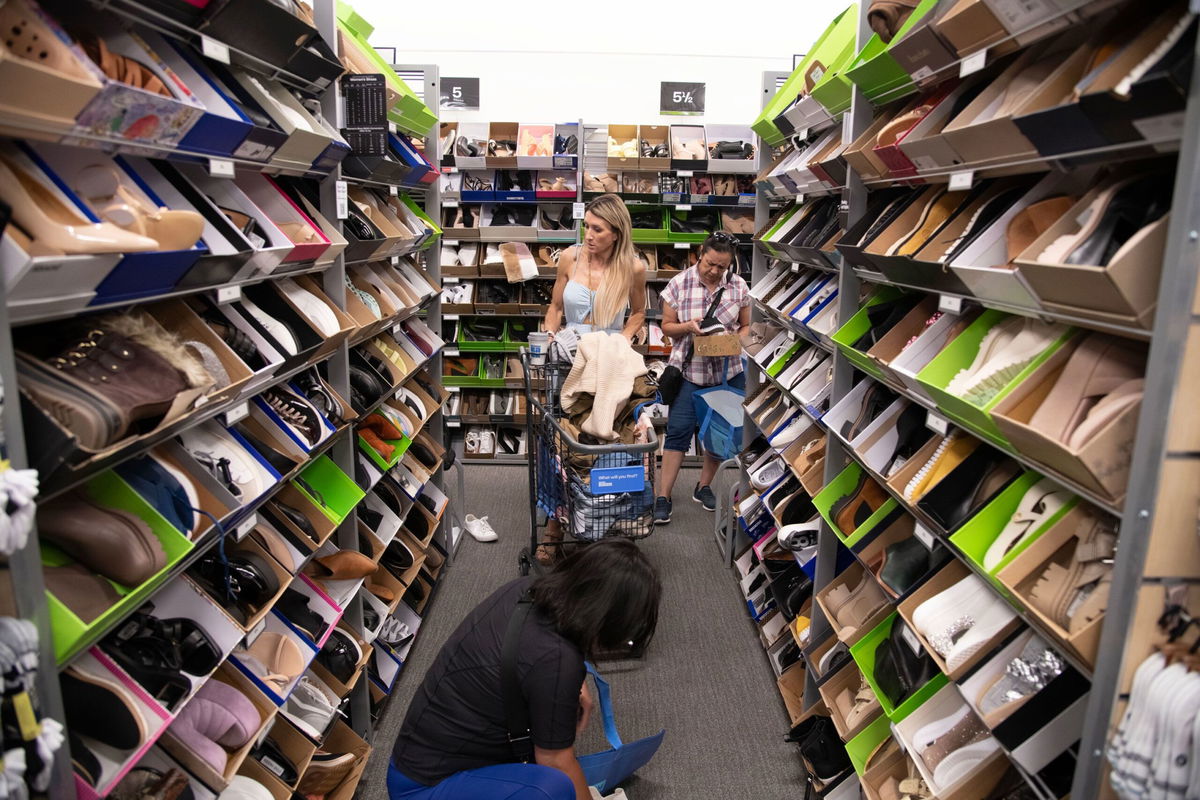The US economy grew more slowly in the second quarter than previously estimated

A general view of the atmosphere as Nordstrom Rack opens a new store on August 17 in Aurora
By Bryan Mena, CNN
Washington, DC (CNN) — The US economy grew more slowly in the second quarter than previously estimated — a good sign for the Federal Reserve, which is attempting to cool demand to bring down price increases.
Gross domestic product, the broadest measure of economic output, rose at an annualized rate of 2.1% in the second quarter, according to the Commerce Department’s second estimate, released Wednesday morning. That’s a slightly slower pace than the 2.4% the department initially estimated.
The second estimate factored in greater consumer spending, government outlays and exports, compared with the initial estimate. Meanwhile, business investment and inventories were revised lower. Business investment — referred to as nonresidential fixed investment — was revised to a 6.1% rate of growth, compared with a 7.7% rate in the first estimate. Residential fixed investment, which reflects conditions in the US housing market, had less of a drag on growth than previously estimated.
Economic growth in the second quarter was mostly broad based, but there were some signs of weakened demand for goods purchases and imports. Consumer spending, which accounts for about 70% of economic output, was revised slightly higher in the second estimate.
“The economy is slowing to a pace that will help bring demand in line with the US’s productive capacity and tame inflation,” wrote Bill Adams, chief economist at Comerica Bank, in an analyst note Wednesday. “The GDP revisions are good news on two levels: Growth still looks good, and the downward revisions reduce the risk of the economy running too hot and exacerbating inflation.”
The Fed is closely watching GDP
Economists widely expected the summer to be robust, with Americans spending big on travel, dining and other in-person experiences. Retail spending jumped in July as the “Barbie” film became a smash hit and Taylor Swift sold out major stadiums across the United States. The Commerce Department releases July figures on consumer spending, which factor in retail sales, on Thursday.
The US economy powered through the summer months, but that remarkable strength kept some Fed officials on edge when they met in July to discuss monetary policy. The central bank opted to raise interest rates by a quarter point to their highest level in 22 years.
Fed Chair Jerome Powell said last week there could be more rate hikes coming down the pike if the economy doesn’t slow.
“Additional evidence of persistently above-trend growth could put further progress on inflation at risk and could warrant further tightening of monetary policy,” Powell said at the Kansas City Fed’s annual economic symposium.
The Atlanta Fed is currently estimating that GDP growth will accelerate sharply to an annualized 5.9% rate in the third quarter, though that estimate will likely be revised lower as the third quarter comes to close.
There are a few factors that could facilitate that a slower pace of growth, such as the resumption of student loan payments in October and the lagged effects of rate hikes.
The average monthly payment among the 44 million Americans with student loans is between $210 and $314, according to Wells Fargo, though the Biden administration recently launched an income-driven repayment plan.
And there is a lot of uncertainty over the delayed effects of tighter monetary policy, specifically when those effects could trickle to the broader economy and how much they will weigh on activity. The Fed kicked off its most aggressive rate-hiking campaign in decades about a year and a half ago, yet the US consumer is still fueling growth.
The economy’s resilience will likely persist in the coming months, raising the odds of the Fed pulling off a soft landing, a scenario in which inflation comes back down to the central bank’s 2% goal without a sharp rise in unemployment.
“Looking ahead, high-frequency data point to steady economic momentum into the second half of the year and confirm that a recession isn’t on the near-term horizon,” wrote Lydia Boussour, senior economist at EY-Parthenon, in an analyst note.
“Notably, real GDP is on track to grow around 2.5% annualized in Q3. Overall, the outlook for the US economy has improved, as unique post-pandemic economic dynamics appear to be making a soft-landing scenario more plausible,” she wrote.
The-CNN-Wire
™ & © 2023 Cable News Network, Inc., a Warner Bros. Discovery Company. All rights reserved.